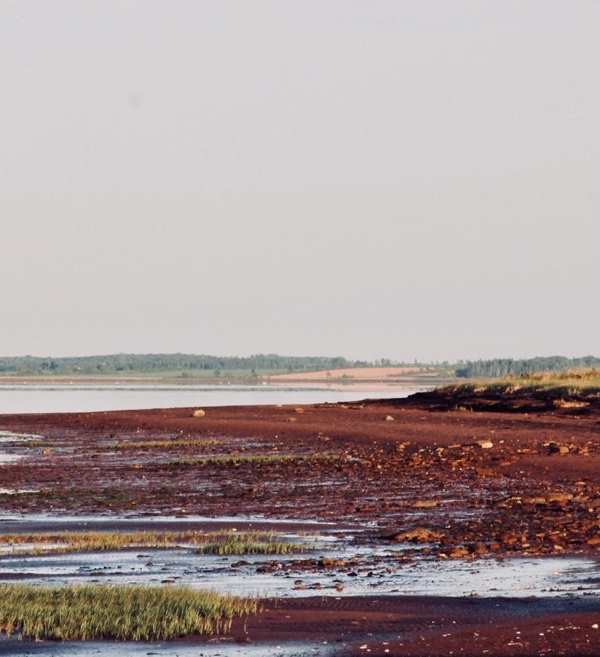Walking Meditations: Becoming Place, Place Becoming
DOI:
https://doi.org/10.25071/1916-4467.40660Keywords:
synaesthesia, animated, bodies, attention, attunement, resonance, feelingAbstract
Interwoven through four lyric snapshots of haptic relations with place—Saskatchewan, New York, South Africa and Egypt—this philosophic rumination considers the primacy of preconscious bodily feeling to learning. Perception at base level is described as synaesthetic—the whole body sensing and moving in relation to agential landscapes. The tangled snapshots embody inter-multi-sensorial experience so to mirror the ways our bodies exist in relation to things seen and unseen. Together, the two texts, two voices, step in support of walking pedagogies as a profound praxis in service to becoming, an unfolding always underway with place, even distant and unfamiliar. Highlighted as embodied and explored, matter central to an earthly curriculum are the methods of slow, attuned, disciplined attention and somatic resonance.References
Abilene. (2018, July 9). Medical discover news: Synthesia may provide clues as to how the brain is wired. Abilene Reporter News. https://www.reporternews.com/story/life/2018/07/09/medical-discover-news-synthesia-may-tell-how-brain-wired/764055002
Abram, D. (1996). The spell of the sensuous: Perception and language in a more-than-human world. Vintage.
Abram, D. (2010). Becoming animal. An earthly cosmology. Pantheon. DOI: https://doi.org/10.1080/14688417.2010.10589067
Ackerman, D. (1990). A natural history of the senses. Vintage.
Anderson, J. (2004). Talking whilst walking: A geographical archaeology of knowledge. Area, 36(3), 254-261. DOI: https://doi.org/10.1111/j.0004-0894.2004.00222.x
Barad, K. (2003). Posthumanist performativity: Toward an understanding of how matter comes to matter. Signs: Journal of Women in Culture and Society, 28(3), 801-831. DOI: https://doi.org/10.1086/345321
Basso, K. H. (1996). Wisdom sits in places: Notes on a Western Apache landscape. In S. Feld & K. H. Basso, Senses of Place (pp. 53-90). School of American Research Press.
Casey, E. (1996). How to get from space to place in a fairly short stretch of time: Phenomenological prolegomena. In S. Feld & K. H. Basso (Eds.), Senses of Place, (pp. 12-52). School of American Research Press.
Casey, E. (2001). Between geography and philosophy: What does it mean to be in the place-world? Annals of the Association of American Geographers, 91(4), 683-693. DOI: https://doi.org/10.1111/0004-5608.00266
Cytowic, R. E. (1989). Synesthesia: A union of the senses. Springer. DOI: https://doi.org/10.1007/978-1-4612-3542-2
Feinberg, P. P. (2016). Towards a walking-based pedagogy. Journal of the Canadian Association for Curriculum Studies, 14(1), 147-165.
Fulton, H. (2010). Walk. Visual Studies, 25(1), 8-14. DOI: https://doi.org/10.1080/14725861003606696
Gallagher, W. (1993). The power of place: How our surroundings shape our thoughts, emotions, and actions. Harper Collins.
Gasset, J. (2011, November 29). C. C. Benison: The landscape in which I live. National Post. Retrieved from https://nationalpost.com/afterword/c-c-benison-the-landscape-in-which-i-live
Heyrman, H. (2005). Art and synesthesia: In search of the synesthetic experience [Paper presentation]. First International Conference on Art and Synesthesia, Universidad de Almeria, Spain. http://www.doctorhugo.org/synaesthesia/art/.
Horowitz, A. (2013). On looking: Eleven walks with expert eyes. Scribner.
Ingold, T. (2010). Footprints through the weather-word: Walking, breathing, knowing. Journal of the Royal Anthropological Institute, S121-S139. DOI: https://doi.org/10.1111/j.1467-9655.2010.01613.x
Ingold, T. (2004). Culture on the ground. Journal of Material Culture, 9(3), 315-40. DOI: https://doi.org/10.1177/1359183504046896
Ingold, T. (2000). The perception of the environment: Essays on livelihood, dwelling and skill. Routledge.
Irving, A. (2010). Dangerous substances and visible evidence: Tears, blood, alcohol, pills. Visual Studies, 25(1), 24-35. DOI: https://doi.org/10.1080/14725861003606753
Irwin, R. L. (2006). Waling to create an aesthetic and spiritual currere. Visual Arts Research, 32(1), 75-82.
Jardine, D. (1998). “The fecundity of the individual case”: Considerations of the pedagogic heart in interpretive work. In D. Jardine (Ed.), To dwell with a boundless heart: Essays in curriculum theory, hermeneutics, and the ecological imagination (pp. 33-52). Peter Lang.
Judson, G. (2018). A walking curriculum: Evoking wonder and developing sense of place (K-12).
Keller, C. (1996). From a broken web: Separation, sexism, and self. Beacon.
Kabat-Zinn, J. (2005). Coming to our senses: Healing ourselves and the world through mindfulness. Hyperion.
Lippard, L. R. (1997). The lure of the local: Senses of place in a multicentered society. Norton.
Mencher, S., & Cytowic, R. (n.d.). Music and the brain podcast [transcript]. Library of Congress. https://www.loc.gov/podcasts/musicandthebrain/transcripts/loc_musicanndthebrain_cytowic.pdf
Merleau-Ponty, M. (1962). Phenomenology of perception. Oxford University Press.
Ogg, A. (2020, November 9). “Pleasantdale.” Cree Literacy Network. http://creeliteracy.org
Pink, S., Hubbard, P., O’Neill, M., & Radley, A. (2010). Walking across disciplines: From ethnography to arts practice. Visual Studies, 25(1), 1-7. DOI: https://doi.org/10.1080/14725861003606670
Püschel, A. (2017). Layers of reality. Perception study of a Synaesthete. The Eriskay Connection.
Solnit, R. (2001). Wanderlust: A history of walking. Verso.
Springgay, S., & Truman, S. E. (2019). Walking methodologies in a more-than-human world: WalkingLab. Routledge.
Stevens, W. (2007). Poem of the day: Tea at the palace of Hoon. In N. Alvarez (Blogger) Poem of the Month. https://ninaalvarez.net/2007/05/04/poem-of-the-day-50/ (First published in 1921)
Van Campen, C. (2009). The hidden sense: On becoming aware of synaesthesia. http://www.daysyn.com/vanCampen2009.pdf
Weil, S. (1947/1999). Gravity and grace. Routledge.
Whitehead, A. N. (1953). Science and the modern world. The Free Press. (First published in 1925)
Whitehead, A. N. (1941). Process and reality. The Free Press. (First published in 1929)
Whitehead, A. N. (1957). The aims of education. The Free Press. (First published in 1929)
Downloads
Published
How to Cite
Issue
Section
License
Copyright (c) 2021 alexandra fidyk 
Copyright for work published in JCACS belongs to the authors. All work is licensed under a Creative Commons Attribution-ShareAlike 4.0 International license.


